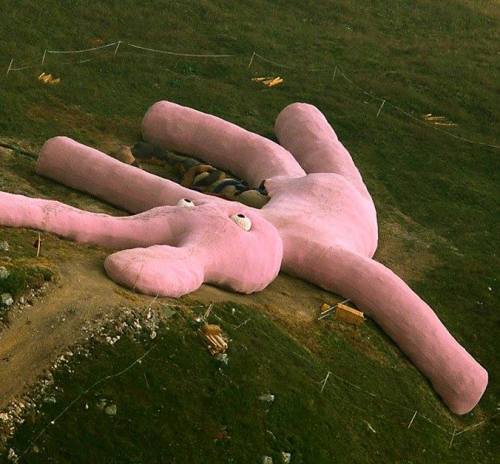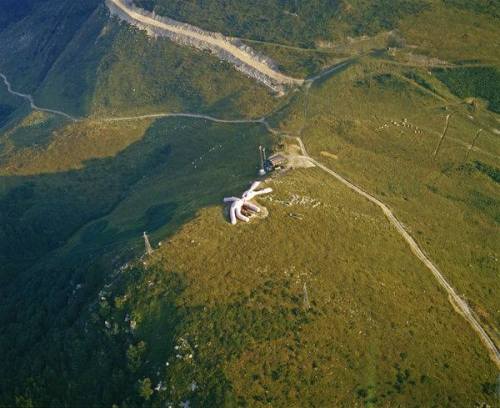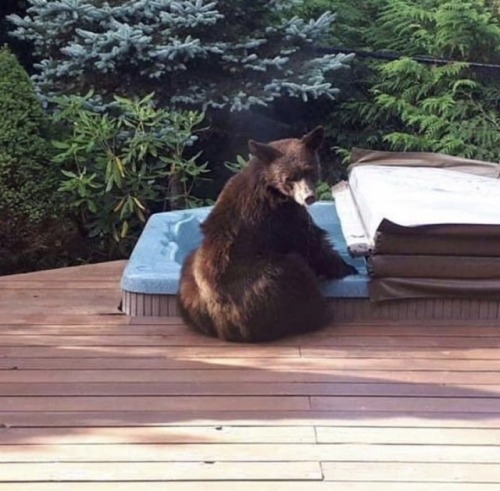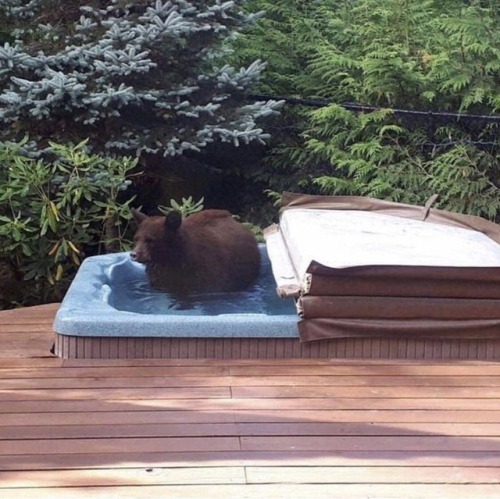Linruuu - Linru ฅ^•ﻌ•^ฅ
More Posts from Linruuu and Others
Not sure what this is but I love him
unrestrained summer fun
THIS IS THE BEST THING I HAVE EVER SEEN
I’m hornet af


In 2005, a group of artists in Italy built a giant 200-foot-long plushie rabbit in the countryside, and just left it there. It’s been there ever since.
(Source)
they’re talking to each other omg (‘:
Parasitic crustaceans are wild.
[cw: photos of parasites inside host bodies]

Here is Linguatula serrata, which lives inside the nose of dogs and other Carnivorans. It belongs to group Pentastomida, which has so shed its arthropod appendages that it was long classified as its own independent phylum (attested in fossils all the way from the Cambrian Explosion!), until molecular analyses showed they were in fact strange crustaceans – closest relatives of the relatively normal-looking fish lice (Branchiura).
And then there’s Pennellidae…

Do those horn-things look like crustaceans to you? And yet the family Pennellidae is fully part of Copepoda, the chief component of crustacean plankton. Its body is simply one elongated trunk and a tiny head biting onto the fish, with two long egg cords trailing behind.
Look at the cod worm (Lernaeocera branchialis), another Pennellidae, hanging from the gills of a fish:

It’s those two red things that look like slugs wearing a wig made of soy noodles. Here’s what it looks like on its own, extracted and preserved:

(source) The coiled strings are egg masses. The slug-like part is the copepod’s trunk. The thin branching thing at the bottom is its head, converted into a sort of root system that no longer does head-like things, but rather burrows into the fish host’s blood vessels to feed its eggs. Incidentally, this is just the female; the male still looks like a regular planktonic crustacean.
Now, regular barnacles (Cirripedia) are strange enough…

(source; picture them as shrimps lying on their back, with a digestive system that fell out of the body wall but is still contained by the outer shell, and feathery legs poking out to filter water)
… but parasitic barnacles of clade Rhizocephala go much further:

Here, on the left, is Sacculina carcini. No, not the crab; the yellow sac poking out of the crab’s belly. On the right, its relative Clistosaccus paguri shows what it might look like once extracted.
Sacculina carcini is fun. A larva looks much like any other crustacean planktonic larva, until it finds a suitable host. It stings the unfortunate crab in a vulnerable spot between armor plates, and effectively injects itself into the host, leaving its own shell outside, and transferring only soft tissues.
Once inside, it grows more like a fungus than an animal, turning into a root-like web that infests the crab’s entire body, down to its leg tips. Then it takes over not only the crab’s digestive system, leeching nutrients for its own eggs, but also its nervous system, effectively controlling it like a puppet.
When the parasite is mature, its egg sac starts bulging out of the crab’s body: that’s the yellow part you see in the photo. Male Sacculina stay larvae their whole life: they just mate with the female’s egg sac and then die. The parasite makes the crab take care of itself as if it was the crab’s own eggs. There’s no competition, since the host is sterilized; to leave more food for the parasite, it also stops molting and regenerating lost limbs. If the host is male, and therefore poorly suited to carrying egg sacs under its tail, Sacculina messes with its hormones and effectively turns it female.
Finally the eggs are released and the whole cycle starts again, with the only purpose of making more eggs whose purpose is making more eggs.
(all pictures from Wikipedia unless specified otherwise)


It typically takes coral 25 to 75 years to reach sexual maturity. With a new coral fragmentation method, it takes just 3.



-
 romancuadrado liked this · 4 weeks ago
romancuadrado liked this · 4 weeks ago -
 omnipah reblogged this · 2 months ago
omnipah reblogged this · 2 months ago -
 karmicrespite reblogged this · 2 months ago
karmicrespite reblogged this · 2 months ago -
 karmicrespite liked this · 2 months ago
karmicrespite liked this · 2 months ago -
 trademarked-disaster reblogged this · 2 months ago
trademarked-disaster reblogged this · 2 months ago -
 eclipsesalign reblogged this · 2 months ago
eclipsesalign reblogged this · 2 months ago -
 stuffbyshelby2 reblogged this · 3 months ago
stuffbyshelby2 reblogged this · 3 months ago -
 noirpanthera liked this · 3 months ago
noirpanthera liked this · 3 months ago -
 tumb1rprincess reblogged this · 3 months ago
tumb1rprincess reblogged this · 3 months ago -
 radiomaxwell reblogged this · 3 months ago
radiomaxwell reblogged this · 3 months ago -
 only-the-g00ds reblogged this · 3 months ago
only-the-g00ds reblogged this · 3 months ago -
 xx0acidicorchid0xx liked this · 4 months ago
xx0acidicorchid0xx liked this · 4 months ago -
 icetea1432 liked this · 4 months ago
icetea1432 liked this · 4 months ago -
 random-fandom210 liked this · 4 months ago
random-fandom210 liked this · 4 months ago -
 yourfavoritebomb reblogged this · 4 months ago
yourfavoritebomb reblogged this · 4 months ago -
 perlethewitch liked this · 4 months ago
perlethewitch liked this · 4 months ago -
 immarainbowpatooie reblogged this · 4 months ago
immarainbowpatooie reblogged this · 4 months ago -
 crimsonxspirit reblogged this · 4 months ago
crimsonxspirit reblogged this · 4 months ago -
 crimsonxspirit liked this · 4 months ago
crimsonxspirit liked this · 4 months ago -
 lurkingemu liked this · 4 months ago
lurkingemu liked this · 4 months ago -
 adventurerobinsfield reblogged this · 5 months ago
adventurerobinsfield reblogged this · 5 months ago -
 avatarofterminus reblogged this · 5 months ago
avatarofterminus reblogged this · 5 months ago -
 chitaprrrrrrrr liked this · 5 months ago
chitaprrrrrrrr liked this · 5 months ago -
 wanderingrestlessly reblogged this · 5 months ago
wanderingrestlessly reblogged this · 5 months ago -
 perculesspleen liked this · 5 months ago
perculesspleen liked this · 5 months ago -
 lynxloverofcandy liked this · 5 months ago
lynxloverofcandy liked this · 5 months ago -
 patches-of-mist reblogged this · 5 months ago
patches-of-mist reblogged this · 5 months ago -
 patches-of-mist liked this · 5 months ago
patches-of-mist liked this · 5 months ago -
 bidjungelskog liked this · 5 months ago
bidjungelskog liked this · 5 months ago -
 ineffable-monster-romancer reblogged this · 5 months ago
ineffable-monster-romancer reblogged this · 5 months ago -
 ineffable-monster-romancer liked this · 5 months ago
ineffable-monster-romancer liked this · 5 months ago -
 dykes-is-slugs liked this · 5 months ago
dykes-is-slugs liked this · 5 months ago -
 slashgod reblogged this · 5 months ago
slashgod reblogged this · 5 months ago -
 shinyflareon reblogged this · 5 months ago
shinyflareon reblogged this · 5 months ago -
 shinyflareon liked this · 5 months ago
shinyflareon liked this · 5 months ago -
 columbidaae liked this · 5 months ago
columbidaae liked this · 5 months ago -
 killingmoonmp3 liked this · 5 months ago
killingmoonmp3 liked this · 5 months ago -
 adamnagaitits liked this · 5 months ago
adamnagaitits liked this · 5 months ago -
 rosybetta liked this · 5 months ago
rosybetta liked this · 5 months ago -
 searchingforthedoctor liked this · 5 months ago
searchingforthedoctor liked this · 5 months ago -
 the-heron reblogged this · 5 months ago
the-heron reblogged this · 5 months ago -
 canontypicalbones reblogged this · 5 months ago
canontypicalbones reblogged this · 5 months ago -
 canontypicalbones liked this · 5 months ago
canontypicalbones liked this · 5 months ago -
 avatarofterminus reblogged this · 5 months ago
avatarofterminus reblogged this · 5 months ago -
 pinkbathrobe reblogged this · 5 months ago
pinkbathrobe reblogged this · 5 months ago -
 anamlessfaceaa liked this · 5 months ago
anamlessfaceaa liked this · 5 months ago -
 chroniclerenigma liked this · 5 months ago
chroniclerenigma liked this · 5 months ago -
 kords-kock-kloset reblogged this · 5 months ago
kords-kock-kloset reblogged this · 5 months ago
